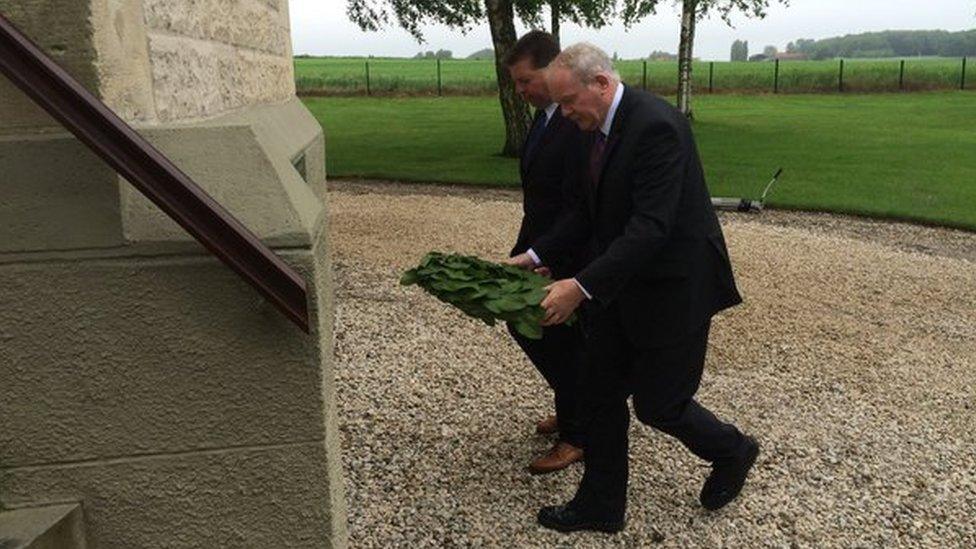World War One training trenches discovered in Ballykinler
- Published
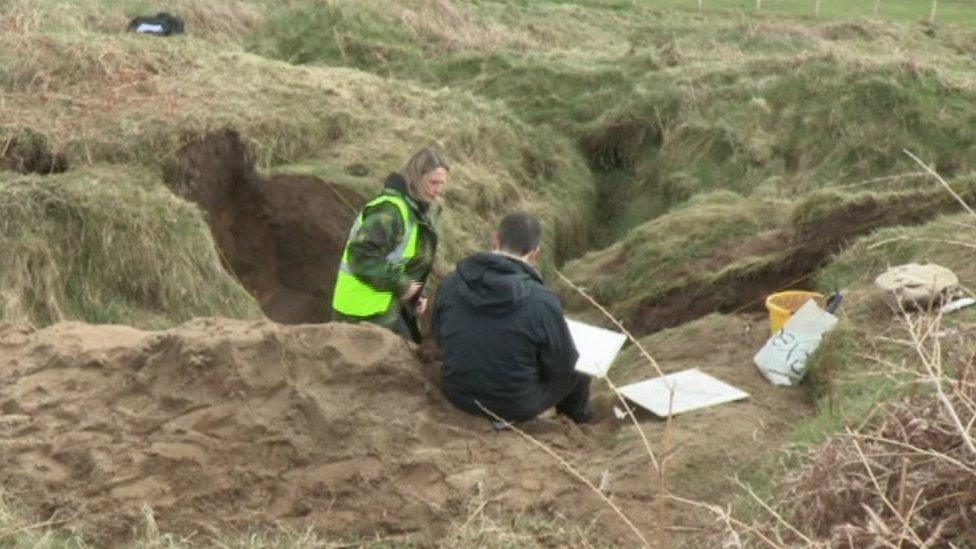
Archaeologists hope to breathe new life into the training trenches at Ballykinler
Thousands of miles from the Somme, under the din of near-constant gunfire, a piece of Northern Ireland's military history has been discovered.
Near the firing ranges of Ballykinler army camp in County Down, archaeologists have been excavating trenches used for training during World War One.
The trenches were found in an overgrown area of gorse near the camp
The hope is to breathe new life back into this surviving trace of the war.
There are plans to restore them to a measure of how they looked 100 years ago.
"There are a lot of locations that have the vestiges of trenches, some of them are just virtually gone in the ground - there's not a lot left of them at all," said Heather Montgomery, an archaeologist from Queen's University.
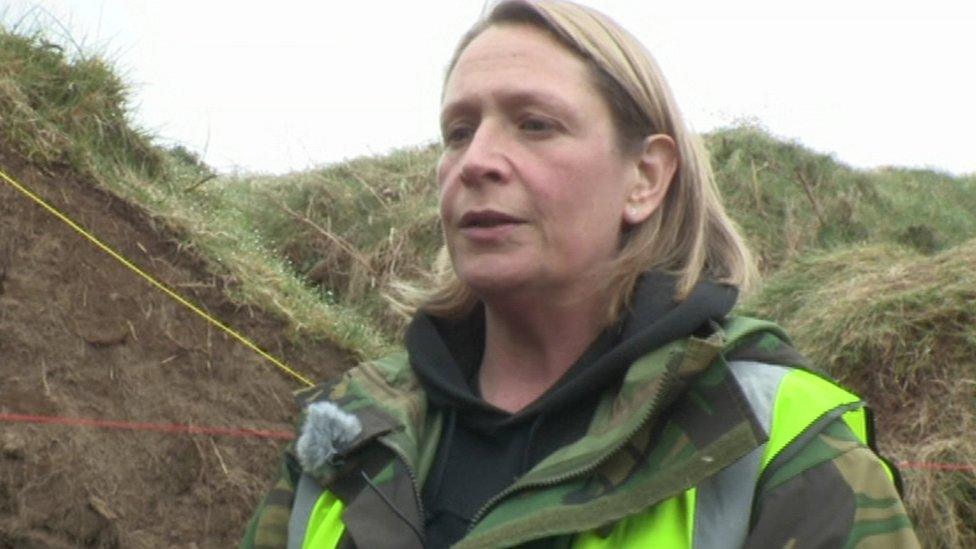
Heather Montgomery said the site showed how trench warfare had developed during WW1
"Ballykinler is quite unique in terms of what does remain in the north of Ireland.
"It's a beautiful facsimile trench system, but there's no story for it at the moment.
"So, we're trying to add to the story.
"We're learning stuff here," she added. "We're seeing what I'm talking about in my research project, we're seeing advances in trench warfare actually in the ground through the archaeology."
Work on the trenches has been ongoing for about 18 months and a larger excavation of the site is planned for later in 2016.
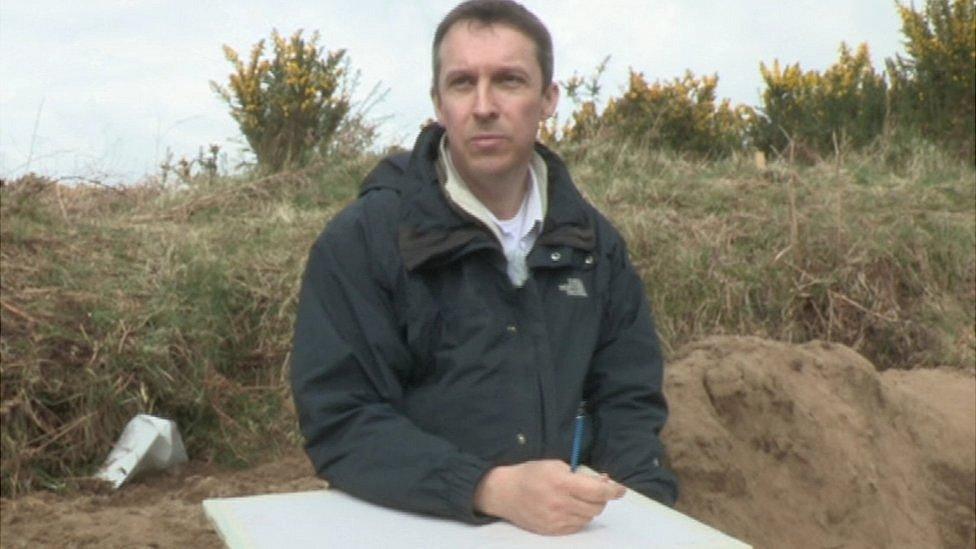
Archaeologist Paul Logue said the site could be restored and used to teach children about WW1
Many of the men who trained in the trenches went on to fight in the battles like the Somme and Messines.
Over 400,000 British and Allied men were killed during the Battle of the Somme, with thousands from the 36th (Ulster) Division killed in the first days of the fighting.
The estate manager for Ballykinler, Tony Canniford, said that the hope is to discover more about how these men trained before they were sent into battle.
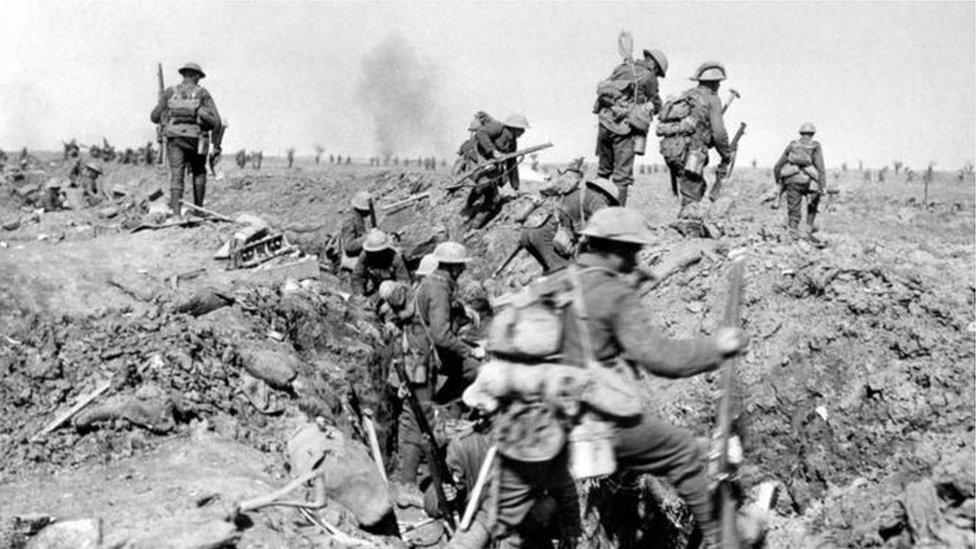
Thousands of men from the 36th (Ulster) Division died in the Battle of the Somme
"There's people out there in Northern Ireland whose grandparents trained in there and they've got personal memories of bits in here themselves.
"It's all to try and pull that story together.
"The training they did in there, did it actually help them? Is there any history within the bottom of the trenches? Most soldiers drop stuff when they're training.
"So, the idea is to try to get a bit of human history to try and give us a little bit more detail rather than just holes in the ground."

The site near at Ballykinler Army Camp in County Down
The team working on the trenches are not just looking into the past, however. They also see a potential future for this remnant from World War One.
"From our perspective in government, we just want to make sure these are properly identified," said Paul Logue, an archaeologist from the Department of Environment.
"That way then we can get to use them for future generations of our children as we move further and further away from the First World War.
"They can maybe even be brought here in the future to teach them about the poor souls that had to train for war in these trenches."
- Published2 June 2016
